- Home
- Salman Rushdie
Imaginary Homelands: Essays and Criticism 1981-1991 Page 3
Imaginary Homelands: Essays and Criticism 1981-1991 Read online
Page 3
Art is a passion of the mind. And the imagination works best when it is most free. Western writers have always felt free to be eclectic in their selection of theme, setting, form; Western visual artists have, in this century, been happily raiding the visual storehouses of Africa, Asia, the Philippines. I am sure that we must grant ourselves an equal freedom.
Let me suggest that Indian writers in England have access to a second tradition, quite apart from their own racial history. It is the culture and political history of the phenomenon of migration, displacement, life in a minority group. We can quite legitimately claim as our ancestors the Huguenots, the Irish, the Jews; the past to which we belong is an English past, the history of immigrant Britain. Swift, Conrad, Marx are as much our literary forebears as Tagore or Ram Mohan Roy. America, a nation of immigrants, has created great literature out of the phenomenon of cultural transplantation, out of examining the ways in which people cope with a new world; it may be that by discovering what we have in common with those who preceded us into this country, we can begin to do the same.
I stress this is only one of many possible strategies. But we are inescapably international writers at a time when the novel has never been a more international form (a writer like Borges speaks of the influence of Robert Louis Stevenson on his work; Heinrich Böll acknowledges the influence of Irish literature; cross-pollination is everywhere); and it is perhaps one of the more pleasant freedoms of the literary migrant to be able to choose his parents. My own—selected half consciously, half not—include Gogol, Cervantes, Kafka, Melville, Machado de Assis; a polyglot family tree, against which I measure myself, and to which I would be honoured to belong.
There’s a beautiful image in Saul Bellow’s latest novel, The Dean’s December. The central character, the Dean, Corde, hears a dog barking wildly somewhere. He imagines that the barking is the dog’s protest against the limit of dog experience. ‘For God’s sake,’ the dog is saying, ‘open the universe a little more!’ And because Bellow is, of course, not really talking about dogs, or not only about dogs, I have the feeling that the dog’s rage, and its desire, is also mine, ours, everyone’s. ‘For God’s sake, open the universe a little more!’
1982
* * *
*Mera joota hai Japani
Yé patloon Inglistani
Sar pé lal topi Rusi—
Phir bhi dil hai Hindustani
—which translates roughly as:
O, my shoes are Japanese
These trousers English, if you please
On my head, red Russian hat—
My heart’s Indian for all that.
[This is also the song sung by Gibreel Farishta as he tumbles from the heavens at the beginning of The Satanic Verses.]
‘ERRATA’: OR, UNRELIABLE NARRATION IN MIDNIGHT’S CHILDREN
According to Hindu tradition, the elephant-headed god Ganesha is very fond of literature; so fond that he agrees to sit at the feet of the bard Vyasa and take down the entire text of the Mahabharata, from start to finish, in an unparalleled act of stenographic love.
In Midnight’s Children, Saleem Sinai makes a reference, at one point, to this old tradition. But his version is a little different. According to Saleem, Ganesha sat at the feet of the poet Valmiki and took down the Ramayana. Saleem is wrong.
It is not his only mistake. During his account of the evolution of the city of Bombay, he tells us that the city’s patron-goddess Mumbadevi has fallen out of favour with contemporary Bombayites: ‘The calendar of festivals reveals her decline … Where is Mumbadevi’s day?’ As a matter of fact, the calendar of festivals includes a perfectly good Mumbadevi Day, or at least it does in all versions of India except Saleem’s.
And how could Lata Mangeshkar have been heard singing on All-India Radio as early as 1946? And does Saleem not know that it was not General Sam Manekshaw who accepted the surrender of the Pakistan Army at the end of the Bangladesh War—the Indian officer who was Tiger Niazi’s old chum being, of course, Jagjit Singh Arora? And why does Saleem allege that the brand of cigarettes, State Express 555, is manufactured by W. D. & H. O. Wills?
I could continue. Concrete tetrapods have never been used in Bombay as part of any land reclamation scheme, but only to shore up and protect the sea wall along the Marine Drive promenade. Nor could the train that brings Picture Singh and Saleem from Delhi to Bombay possibly have passed through Kurla, which is on a different line.
Etcetera. It is by now obvious, I hope, that Saleem Sinai is an unreliable narrator, and that Midnight’s Children is far from being an authoritative guide to the history of post-independence India.
But this isn’t quite how unreliable narration usually works in novels. Conventionally unreliable narrators are often a little stupid, less able to work out what’s going on around them than the reader. In such narratives, one deciphers the true meaning of events by ‘seeing through’ the narrator’s faulty vision. However, the narrator of Midnight’s Children is neither particularly stupid, nor particularly unaware of what’s happening.
Why, then, all the errata? One answer could be that the author has been sloppy in his research. ‘If you’re going to use Hindu traditions in your story, Mr Rushdie,’ I was asked by an irate and shiny-headed gentleman in Bangalore—he had spotted the Valmiki/Vyasa confusion—‘don’t you think you could take the trouble to look it up?’ I have also received letters arguing about Bombay bus routes, and informing me that certain ranks used by the Pakistan Army in the text are not in fact used by the Pakistan Army in Pakistan. In these letters there is always an undertone of pleasure: the reader’s delight at having ‘caught the writer out’.
So let me confess that the novel does contain a few mistakes that are mine as well as Saleem’s. One is to be found in the description of the Amritsar massacre, during which I have Saleem say that Dyer entered the Jallianwala Bagh compound followed by ‘fifty white troops’. The truth is that there were fifty troops, but they weren’t white. When I first found out my error I was upset and tried to have it corrected. Now I’m not so sure. The mistake feels more and more like Saleem’s; its wrongness feels right.
Elsewhere, though, I went to some trouble to get things wrong. Originally error-free passages had the taint of inaccuracy introduced. Unintentional mistakes were, on being discovered, not expunged from the text but, rather, emphasized, given more prominence in the story. This odd behaviour requires an explanation.
When I began the novel (as I’ve written elsewhere) my purpose was somewhat Proustian. Time and migration had placed a double filter between me and my subject, and I hoped that if I could only imagine vividly enough it might be possible to see beyond those filters, to write as if the years had not passed, as if I had never left India for the West. But as I worked I found that what interested me was the process of filtration itself. So my subject changed, was no longer a search for lost time, had become the way in which we remake the past to suit our present purposes, using memory as our tool. Saleem’s greatest desire is for what he calls meaning, and near the end of his broken life he sets out to write himself, in the hope that by doing so he may achieve the significance that the events of his adulthood have drained from him. He is no dispassionate, disinterested chronicler. He wants so to shape his material that the reader will be forced to concede his central role. He is cutting up history to suit himself, just as he did when he cut up newspapers to compose his earlier text, the anonymous note to Commander Sabarmati. The small errors in the text can be read as clues, as indications that Saleem is capable of distortions both great and small. He is an interested party in the events he narrates.
He is also remembering, of course, and one of the simplest truths about any set of memories is that many of them will be false. I myself have a clear memory of having been in India during the China War. I ‘remember’ how frightened we all were, I ‘recall’ people making nervy little jokes about needing to buy themselves a Chinese phrase book or two, because the Chinese Army was not expected to stop until it r
eached Delhi. I also know that I could not possibly have been in India at that time. I was interested to find that even after I found out that my memory was playing tricks my brain simply refused to unscramble itself. It clung to the false memory, preferring it to mere literal happenstance. I thought that was an important lesson to learn.
Thereafter, as I wrote the novel, and whenever a conflict arose between literal and remembered truth, I would favour the remembered version. This is why, even though Saleem admits that no tidal wave passed through the Sundarbans in the year of the Bangladesh War, he continues to be borne out of the jungle on the crest of that fictional wave. His truth is too important to him to allow it to be unseated by a mere weather report. It is memory’s truth, he insists, and only a madman would prefer someone else’s version to his own.
Saleem Sinai is not an oracle; he’s only adopting a kind of oracular language. His story is not history, but it plays with historical shapes. Ironically, the book’s success—its Booker Prize, etc—initially distorted the way in which it was read. Many readers wanted it to be the history, even the guide-book, which it was never meant to be; others resented it for its incompleteness, pointing out, among other things, that I had failed to mention the glories of Urdu poetry, or the plight of the Harijans, or untouchables, or what some people think of as the new imperialism of the Hindi language in South India. These variously disappointed readers were judging the book not as a novel, but as some sort of inadequate reference book or encyclopaedia.
The passage of time has smoothed out such wrinkles. I’d just like to clear up that mistake of Saleem’s about the god Ganesha. It happens just after Saleem has been boasting about his own erudition. In spite of coming from a Muslim background, he tells us, he’s well up on the Hindu stories. That he should instantly perpetrate a howler about the myth which is, after all, most central to himself (Ganesha’s elephantine nose, and dubious parentage, prefigure his own) was, I thought, a way of deflating that narratorial pomposity; but it was also—along with Saleem’s other blunder about the date of Mahatma Gandhi’s assassination—a way of telling the reader to maintain a healthy distrust.
History is always ambiguous. Facts are hard to establish, and capable of being given many meanings. Reality is built on our prejudices, misconceptions and ignorance as well as on our perceptiveness and knowledge. The reading of Saleem’s unreliable narration might be, I believed, a useful analogy for the way in which we all, every day, attempt to ‘read’ the world.
1983
THE RIDDLE OF MIDNIGHT: INDIA, AUGUST 1987
Forty years ago, the independent nation of India and I were born within eight weeks of one another. I came first. This gave rise to a family joke—that the departure of the British was occasioned by my arrival on the scene—and the joke, in turn, became the germ of a novel, Midnight’s Children, in which not just one child, but one thousand and one children born in the midnight hour of freedom, the first hour of 15 August 1947, were comically and tragically connected to the birth of a nation.
(I worked out, by the way, that the Indian birth rate in August 1947 was approximately two babies per second, so my fictional figure of 1,001 per hour was, if anything, a little on the low side.)
The chain reaction continued. The novel’s title became, for many Indians, a familiar catch-phrase defining that generation which was too young to remember the Empire or the liberation struggle; and when Rajiv Gandhi became Prime Minister, I found his administration being welcomed in the newspapers by such headlines as: ‘Enter midnight’s children.’
So when forty came around, it occurred to me to take a look at the state of the Indian nation that was, like me, entering its fifth decade; and to look, in particular, through the eyes of the class of ‘47, the country’s citizen-twins, my generation. I flew to the subcontinent in search of the real-life counterparts of the imaginary beings I once made up. Midnight’s real children: to meet them would be like closing a circle.
There was a riddle I wanted to try and answer, with their help: Does India exist? A strange, redundant sort of inquiry, on the face of it. After all, there the gigantic place manifestly is, a rough diamond two thousand miles long and more or less as wide, as large as Europe though you’d never guess it from the Mercator projection, populated by around a sixth of the human race, home of the largest film industry on earth, spawning Festivals the world over, famous as the ‘world’s biggest democracy’. Does India exist? If it doesn’t, what’s keeping Pakistan and Bangladesh apart?
It’s when you start thinking about the political entity, the nation of India, the thing whose fortieth anniversary it is, that the question starts making sense. After all, in all the thousands of years of Indian history, there never was such a creature as a united India. Nobody ever managed to rule the whole place, not the Mughals, not the British. And then, that midnight, the thing that had never existed was suddenly ‘free’. But what on earth was it? On what common ground (if any) did it, does it, stand?
Some countries are united by a common language; India has around fifteen major languages and numberless minor ones. Nor are its people united by race, religion or culture. These days, you can even hear some voices suggesting that the preservation of the union is not in the common interest. J. K. Galbraith’s description of India as ‘functioning anarchy’ still fits, but the stresses on the country have never been so great. Does India exist? If it doesn’t, the explanation is to be found in a single word: communalism. The politics of religious hatred.
There is a medium-sized town called Ayodhya in the state of Uttar Pradesh, and in this town there is a fairly commonplace mosque named Babri Masjid. According to the Ramayana, however, Ayodhya was the home town of Rama himself, and according to a local legend the spot where he was born—the Ramjanmabhoomi—is the one on which the Muslim place of worship stands today. The site has been disputed territory ever since independence, but for most of the forty years the lid has been kept on the problem by the very Indian method of shelving the case, locking the mosque’s gates, and allowing neither Hindus nor Muslims to enter.
Last year, however, the case finally came to court, and the judgement seemed to favour the Hindus. Babri Masjid became the target of the extremist Hindu fundamentalist organization, the Vishwa Hindu Parishad. Since then, Hindus and Muslims all over North India have been clashing, and in every outbreak of communal violence the Babri Masjid affair is cited as a primary cause.
When I arrived in Delhi the old Walled City was under heavy curfew because of just such an outbreak of communal violence. In the little alleys of Chandni Chowk I met a Hindu tailor, Harbans Lal, born in 1947 and as mild and gentle a man as you could wish to find. The violence terrified him. ‘When it started,’ he said, ‘I shut up the shop and ran away.’ But in spite of all his mildness, Harbans Lal was a firm supporter of the Hindu nationalist party that used to be called the Jan Sangh and is now the BJP. ‘I voted for Rajiv Gandhi in the election after Mrs Gandhi died,’ he said. ‘It was a big mistake. I won’t do it again.’ I asked him what should be done about the Babri Masjid issue. Should it be locked up again as it had been for so many years? Should it be a place where both Hindus and Muslims could go to worship? ‘It’s a Hindu shrine,’ he said, ‘It should be for the Hindus.’ There was no possibility, in his mind, of a compromise.
A couple of days later the Walled City was still bubbling with tension. The curfew was lifted for an hour or two every day to enable people to go out and buy food. The rest of the time, security was very tight. It was Eid, the great Muslim festival celebrating the end of the month of fasting, but the city’s leading imams had said that Eid should not be celebrated. In Meerut, the mutilated corpses of Muslims floated in the river. The city’s predominantly Hindu police force, the PAC, had run amok. Once again, Babri Masjid was one of the bones of contention.
I met Abdul Ghani, a Delhi Muslim who worked in a sari shop, and who, like Harbans Lal, India and me, was 1947-born. I was struck by how much like Harbans Lal he was. They were both slightl
y built, mild-mannered men with low, courteous voices and attractive smiles. They each earned about 1,000 rupees (100 dollars) a month, and dreamed of owning their own shops, knowing they never would. And when it came to the Hindu-Muslim communal divide, Abdul Ghani was just as unyielding as Harbans Lal had been. ‘What belongs to the Muslims,’ he said when I asked about Babri Masjid, ‘should be given back to the Muslims. There is nothing else to be done.’
The gentleness of Harbans Lal and Abdul Ghani made their religious divisions especially telling. Nor was Babri Masjid the only issue between the faiths. At Ahmedabad, in the state of Gujarat, Hindu-Muslim violence was again centred in the old walled-city area of Manek Chowk, and had long ago acquired its own internal logic: so many families had lost members in the fighting that the cycle of revenge was unstoppable. Political forces were at work, too. At Ahmedabad hospital the doctors found that many of the knife wounds they treated were professionally inflicted. Somebody was sending trained killers into town.
All over India—Meerut, Delhi, Ahmedabad, Bombay—tension between Hindus and Muslims was rising. In Bombay, a (1947-born) journalist told me that many communal incidents took place in areas where Muslims had begun to prosper and move up the economic scale. Behind the flashpoints like Ayodhya, she suggested, was Hindus’ resentment of Muslim prosperity.

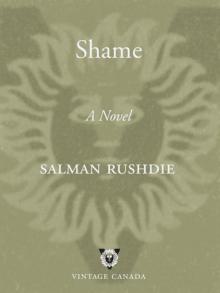 Shame
Shame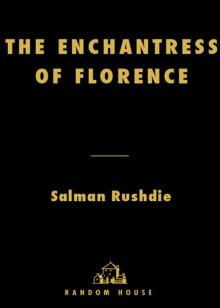 The Enchantress of Florence
The Enchantress of Florence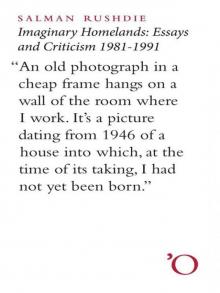 Imaginary Homelands: Essays and Criticism 1981-1991
Imaginary Homelands: Essays and Criticism 1981-1991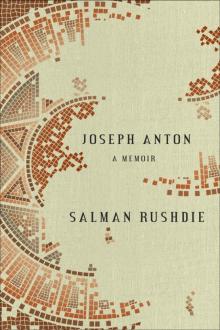 Joseph Anton: A Memoir
Joseph Anton: A Memoir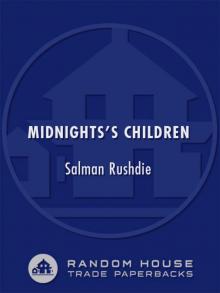 Midnight's Children
Midnight's Children East, West: Stories
East, West: Stories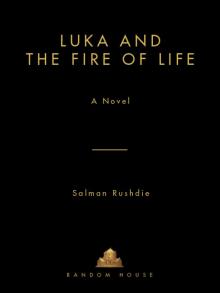 Luka and the Fire of Life
Luka and the Fire of Life Fury Fury Fury
Fury Fury Fury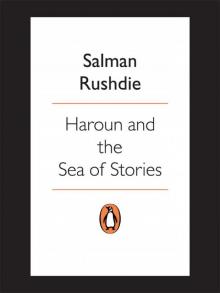 Haroun and the Sea of Stories
Haroun and the Sea of Stories Step Across This Line: Collected Nonfiction 1992-2002
Step Across This Line: Collected Nonfiction 1992-2002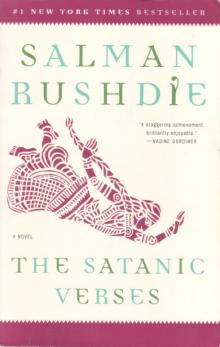 The Satanic Verses
The Satanic Verses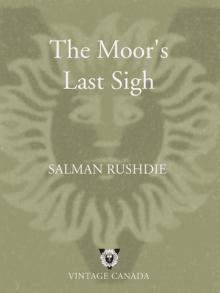 The Moor's Last Sigh
The Moor's Last Sigh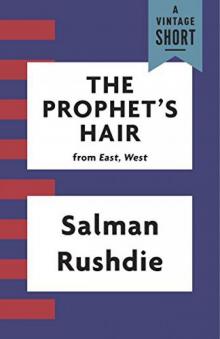 The Prophet's Hair
The Prophet's Hair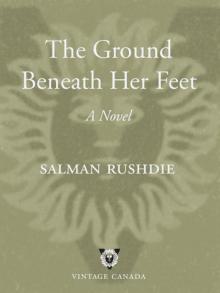 The Ground Beneath Her Feet
The Ground Beneath Her Feet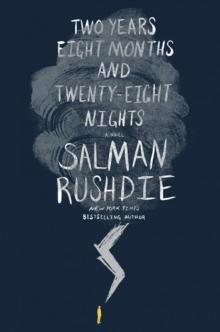 Two Years Eight Months and Twenty-Eight Nights
Two Years Eight Months and Twenty-Eight Nights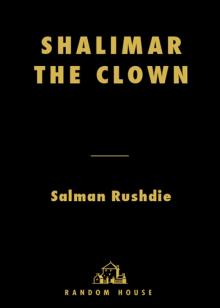 Shalimar the Clown
Shalimar the Clown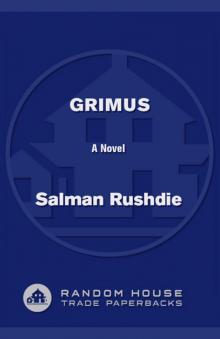 Grimus
Grimus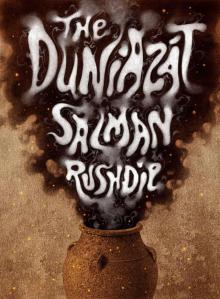 The Duniazát
The Duniazát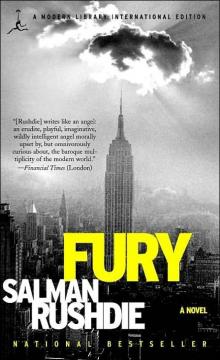 Fury
Fury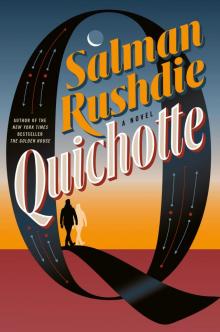 Quichotte
Quichotte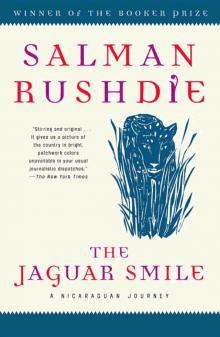 The Jaguar Smile
The Jaguar Smile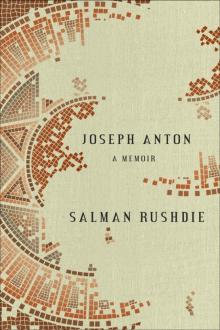 Joseph Anton
Joseph Anton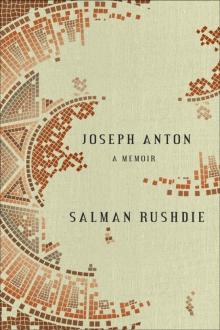 Joseph Anton: A Memoir: A Memoir
Joseph Anton: A Memoir: A Memoir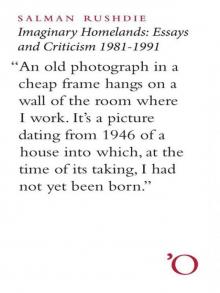 Imaginary Homelands
Imaginary Homelands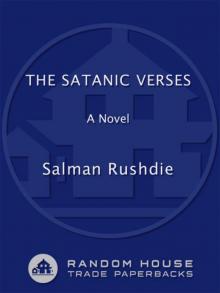 The Satanic Verses: A Novel
The Satanic Verses: A Novel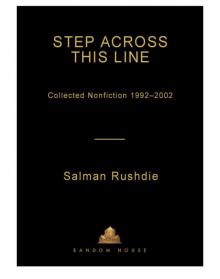 Step Across This Line
Step Across This Line East, West
East, West